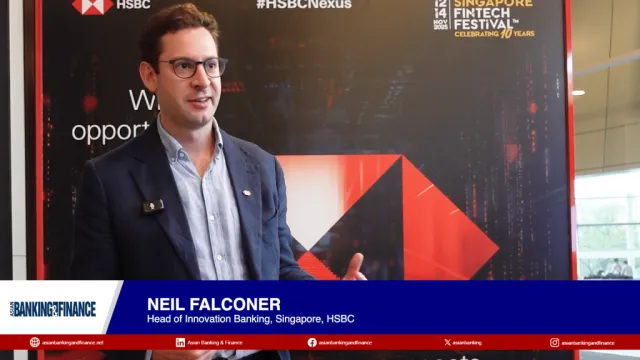Enterprise Agility: How Digital Banks Can Stand Out from the Crowd
By Ramya VishwanathAlthough digital banks have captivated financial institutions and end-customers alike, the concept often means different things to different people.
Neobanks have been springing up more frequently in recent years. Thanks to new virtual banking licenses in Singapore and Hong Kong, digitally native companies both neobanks and non-banks are offering financial services without the operational burden of legacy technology or branch networks to highly engaged customers hungry for better experiences.
In Hong Kong, the government regulator handed out the first batch of digital banking licenses in 2019, offering a chance for new entrants to vie for the retail banking business in the city. In all, eight virtual banks are in the market today.
Meanwhile, in Singapore, four digital bank licenses were given out in 2020, two for Digital Full Bank and two for Digital Wholesale Bank.
Established banks are catching up by tapping into an ecosystem of partners with a range ofdigital capabilities allowing them to overcome disruptive challenges and better serve customersold and new with new non-banking services. In December 2021, the SCBX Group inked a deal with Publicis Sapient to launch SCB TechX, a joint venture to usher in the next generation of financial services across Southeast Asia. It offers platform-as-a-service to help banks reimagine customer engagement while driving efficiencies in the back office. Beyond that, the business will also provide non-banking services to commercial institutions and consumers in the region.
To stand out in this increasingly saturated market, all banks must embrace digital. There is no alternative. But how?
Banks must be able to adapt continuously—in an agile fashion—to constant change and disruption. Although digitalisation has been in progress over the last 8 years; it has significantly accelerated over the past two years. The road is still fraught with challenges, and it is important for banks to understand and avoid common mistakes while marching steadily towards digital existence.
Rushing in, losing out
One common issue is that banks often rush to develop a digital product or adopt a single digital technology and expect it to transform their business. Experience has shown that a project- or product-based mindset does not help in the long term.
For example, developing a mobile application that offers an attractive front end may not be enough to cover up the lack of capabilities in a back-end system that is run on legacy hardware. When a customer taps on their phone screen to view transaction records from more than a couple of months ago, the app slows to a crawl because legacy backend applications are unable to scale and provide quick response times.
In the rush to digitalisation, many banks can lose sight of the fact that revamping banking infrastructure is often a multi-year exercise that comes with increased cost and risk. Some boards, unfortunately, choose to focus on a digital product or service that can be created in months— and use it to spearhead their digital efforts. Any larger issues with the backend tend to snowball over time, creating a potentially negative experience for customers, resulting in further time, cost, and efforts to rectify in the future.
Business units operating in silo with a myopic product vision is another issue. Creating individual products to capitalise on an immediate gain, without a more holistic strategy in place, risks having multiple products and services competing for the same market and customer share. Multiple apps targeting various customer segments end up increasing costs and not generating enough revenue and app utilisation. It also confuses the customer and ruins the experience!
Enterprise agility in digital transformation
Enterprise agility is the prowess all industries seek. For banks, achieving enterprise level agility is particularly challenging. However, once implemented correctly, it not only allows banks quick to market product releases, but also sets them up to adapt to disruptive change.
Here, it is important to note that there are various layers to the notion of enterprise agility. An agile mindset must guide a bank’s values, principles, practices, tools, and processes. If there is no end to-end business transformation effort, it becomes harder to change to newer and better tools and processes down the line. A bank may have an advanced front-end application but still get dragged down by back-end systems that were not designed to keep up with their agile ambitions.
Understandably, it is not trivial to decommission old servers and applicationsthat have been doing the job of delivering services with certainty for years. However, both direct and indirect costs will add up if legacy technology infrastructure becomes more difficult to manage. This will eventually make it more difficult to establish a more agile solution in the long term.
Conversely, banks that have moved away from legacy technology will find the cost of creating new apps to be lower over time. With easier scalability through the cloud, development teams can create, test, and deploy apps much faster. What’s more, by using application programming interfaces (APIs) to connect to and call services from a more responsive back end, this reduces the need to create new apps from the ground up each time.
Instead of creating apps in a “waterfall” fashion, this firm foundation will help create a “repeatable” pipeline of apps or micro-services that can be replicated easily or adapted quickly to meet new needs.
Standing out from the crowd
What will ultimately distinguish one digital bank from another is agility, and how quickly the organisation is able to respond to changes and meet customer needs with the digital tools already at its disposal.
Rightly, many banks now see themselves as technology companies in the business of delivering financial services, thanks in no small part to the constant innovation needed to compete.
Constant iteration is a necessary part of this agile process, coupled with performance metrics that help provide a measurable indication of how well these services and products are performing. This can come in the form of customer feedback given through an app, or through A/B testing to see which path yields the best outcomes for a specific set of customer and business requirements. More importantly, a bank’s management as well as its development team must constantly review pipeline builds and their backlogs, checking how far in the agility journey they have progressed.
Change is not particularly easy in the banking, more so a highly regulated sector where service delivery standards are stringent, and downtime comes with severe penalties to the bottom line. To this end, it is unsurprising that stability has long been regarded a critical factor of success.
However, a change of mindset is needed now more than ever. Being quick to market is important, but this can only be sustainable in the long term if there is agility from end to end. That will include overhauling legacy technology and taking the necessary risks.
Committing to these changes is not easy but it is necessary to be truly agile. The winning digital bank of the future will be one that is not just able to deliver high performance in uptime and experience, but also one that is constantly updating itself and delivering fresh and consistently performing offerings over time.



















 Advertise
Advertise










